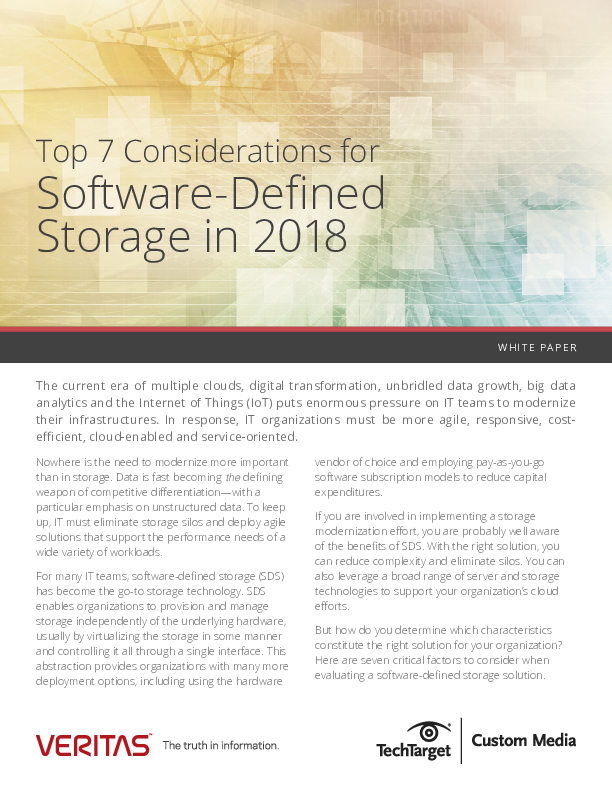Top Seven Considerations for Software-Defined Storage
Nowhere is the need to modernize more important than in storage. Data is fast becoming the defining weapon of competitive differentiation—with a particular emphasis on unstructured data. To keep up, IT must eliminate storage silos and deploy agile solutions that support the performance needs of a wide variety of workloads.
For many IT teams, software-defined storage (SDS) has become the go-to storage technology. SDS enables organizations to provision and manage storage independently of the underlying hardware, usually by virtualizing the storage in some manner and controlling it all through a single interface. This abstraction provides organizations with many more deployment options, including using the hardware vendor of choice and employing pay-as-you-go software subscription models to reduce capital expenditures.
If you are involved in implementing a storage modernization effort, you are probably well aware of the benefits of SDS. With the right solution, you can reduce complexity and eliminate silos. You can also leverage a broad range of server and storage technologies to support your organization’s cloud efforts.
But how do you determine which characteristics constitute the right solution for your organization? Here are seven critical factors to consider when evaluating a software-defined storage solution.
